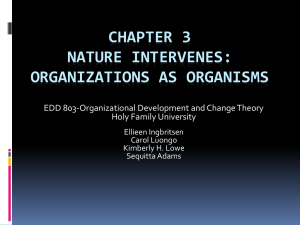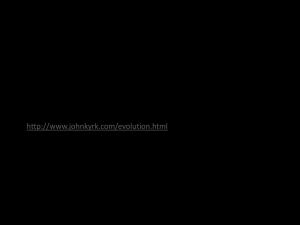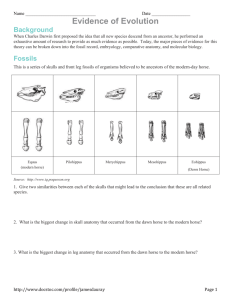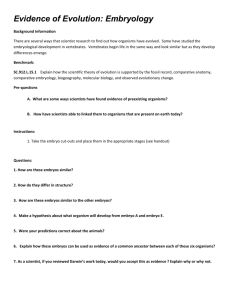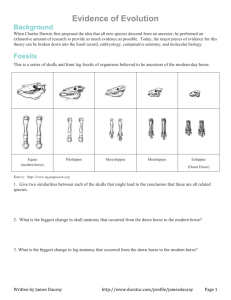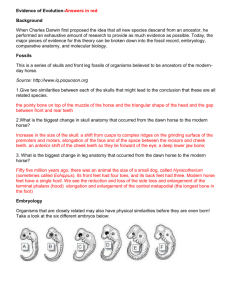Evidence of Evo Rotation Lab Stations 2016
advertisement
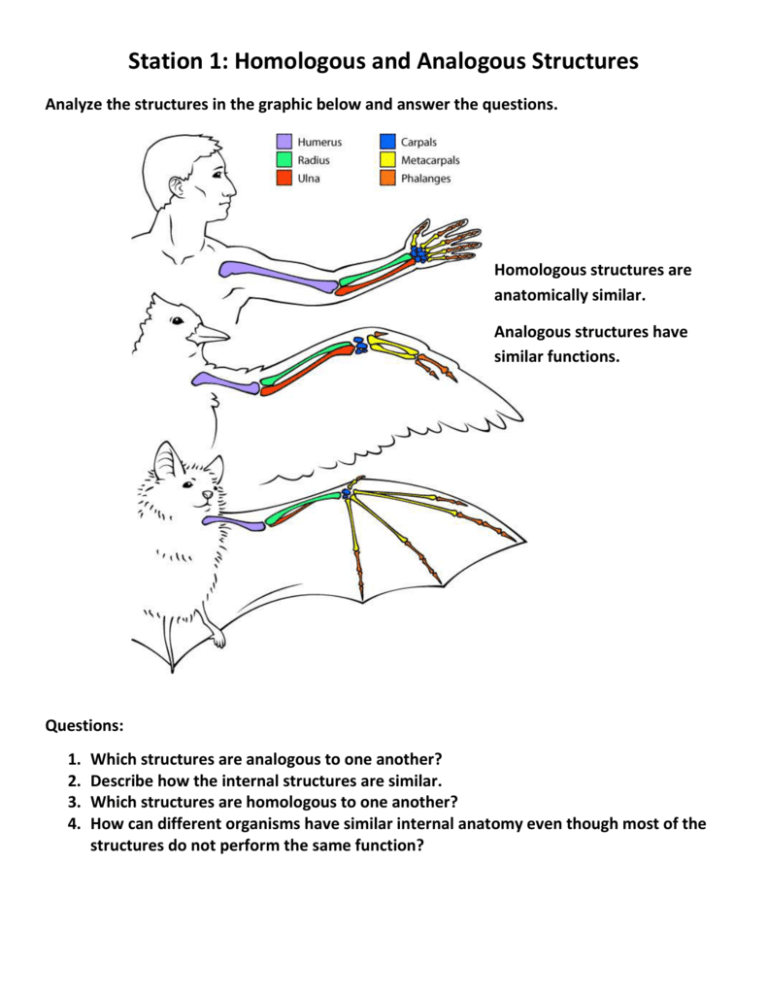
Station 1: Homologous and Analogous Structures Analyze the structures in the graphic below and answer the questions. Homologous structures are anatomically similar. Analogous structures have similar functions. Questions: 1. 2. 3. 4. Which structures are analogous to one another? Describe how the internal structures are similar. Which structures are homologous to one another? How can different organisms have similar internal anatomy even though most of the structures do not perform the same function? Station 2: Embryology Organisms that are closely related may also have physical similarities before they are even born! Take a look at the six different embryos below: Hypothesize which embryo is from each of the following organisms on the chart on your answer sheet. These are older, more developed embryos from the same organisms. Hypothesize which embryo is from each of the following organisms on the chart on your answer sheet. These are embryos at their most advanced stage, shortly after birth. Describe how the embryos changed for each of these organisms from their earliest to latest stages. Station 3: Cell Phone Evolution B E A D C F Questions: 1. Put the cell phones in order of earliest to most recent phones. 2. This is man-made evolution; how is this different than evolution in nature? 3. Which cell phone is the most complex? _______ 4. Which cell phone is the most simple? _________ Station 4: Biogeography The map above represents the 5-year journey of the HMS Beagle from 1831-1836. While on the voyage, Charles Darwin noted that organisms living in similar island habitats around the world were not alike. He also observed that island organisms more closely resembled those from neighboring mainlands. On the Galapagos islands he observed that each island had its own distinct populations of species with slightly different traits. Questions: 1. How could island-dwelling organisms be unique to an island, similar yet different to nearby mainland organisms, and not have the same adaptations as other organisms living in similar island habitats? Station 5: Fossil Record Examine the graphic below and answer the questions. Questions: 1. Which layer is the oldest? How do you know? 2. What do the organisms in the layers represent? 3. Write an explanation that summarizes the change in layers and fossilized remains of organisms.





